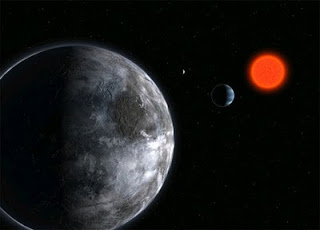
Kepler lost its two reaction wheels, but this did not stop the NASA’s spacecraft to search for alien planets. Indeed, the space telescope discovers alien world again in its new mission. Since operating back again from a malfunction in May 2013, the spacecraft found its first new extraterrestrial planet named HIP 116454b, also called as the super Earth mainly because it is larger than approximately 2.5 times than planet Earth. Lies in the constellation Pisces, in 180 light-years from Earth, the newly discovered alien planet is near enough to be studied by other instruments, according to scientists.
The reborn of Kepler has been even better because the first discovered planet is ripe for follow-up studies, said scientist Andrew Vanderburg of the Harvard-Smithsonian Center for Astrophysics (CfA).
Launched in March 2009, Kepler was on a 3.5-year mission to determine the number of Earth-like planets in the Milky Way galaxy. Scientists have discovered close to a thousand confirmed planets through Kepler. More than 50% of these known alien worlds are believed to be the real deal, along with approximately 3,200 other candidates.
In May 2013, Kepler’s second of its four reaction wheels malfunctioned. These wheels are necessary for precise pointing. However, the letdown did not stop the team to find a way to increase the stability of Kepler. Members of the team used the subtle pressure of sunlight to provide a solution to the stability issue then proposed a new mission named K2. The new Kepler’s mission would continue the hunt of exoplanet and study other cosmic phenomena as well as space objects.
Twelve times more massive as compared to Earth, the HIP 116454b is approximately 20,000 miles wide and its density suggests that it’s either a small version of Neptune with large, thick atmosphere or primarily covered by water.
The distance between the newly discovered world to its host star is 8.4 million miles or 13.5 million kilometers. Its host star is an orange dwarf, slightly smaller as well as cooler than the sun in the solar system. HIP 116454b completes an orbit every 9.1 days.
The planet’s close distance to Earth means it will be a top target for telescopes in space and on the ground.


The recorded transmissions of an alien female named Ashpela in 2012 where she tells that she comes from “the v in the constellation of Pisces” . See the Nu series of books, 5 manuscripts that were transmitted by a collective energy on science, space, universe and much more, author includes transmissions from other species. All Nu series on Amazon U.S. and U.K. by janine e lever.
Does this writer know how to use the English language?